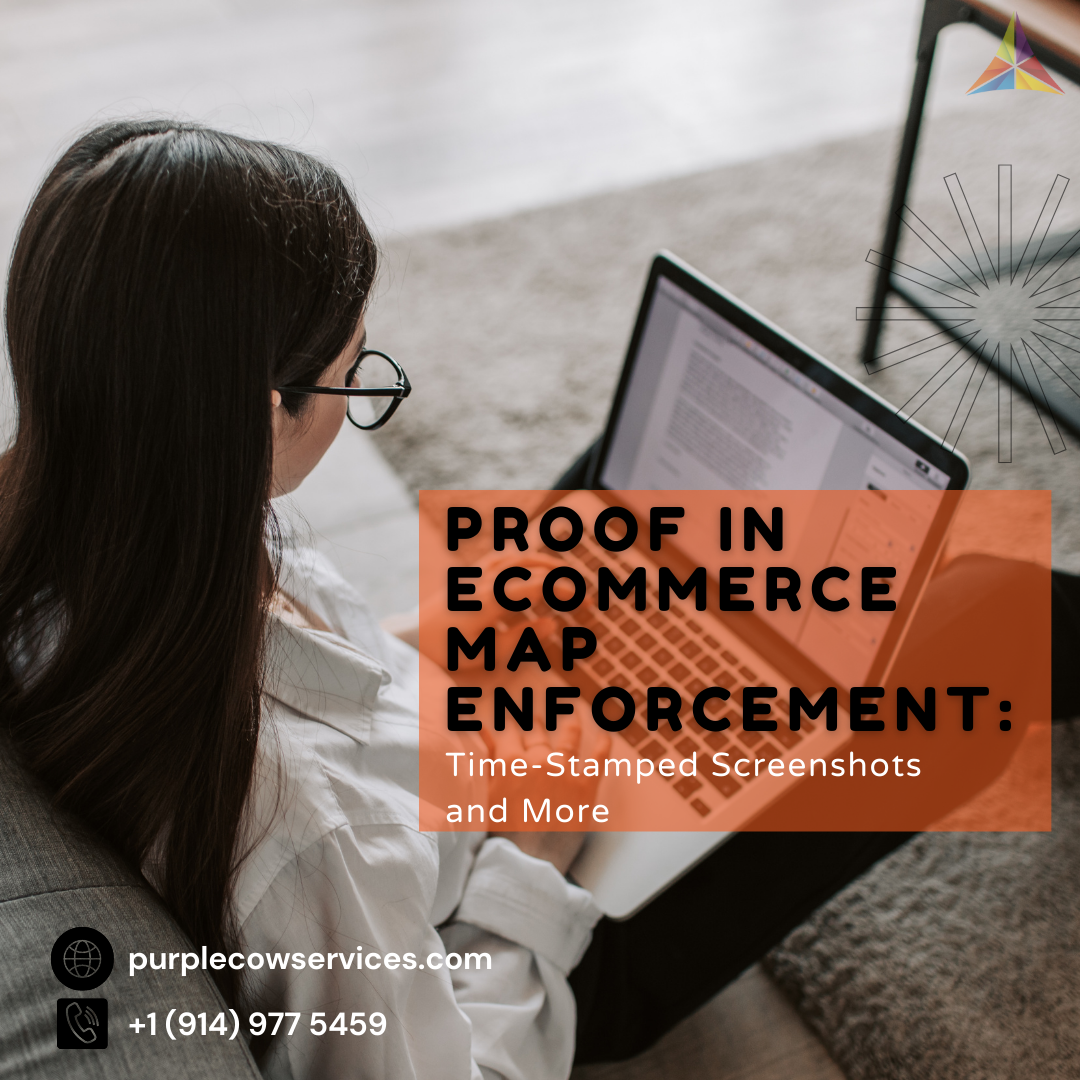Maintaining brand integrity is crucial in today's highly competitive eCommerce landscape, and enforcing Minimum Advertised Price (MAP) policies is an effective way to achieve this. However, enforcing these policies can be challenging, especially when retailers engage in price undercutting.
Share This Story, Choose Your Platform!
The burden of proof rests on the manufacturer or distributor who must demonstrate that a retailer has violated the MAP policy. In this blog, we will discuss the importance of proof in eCommerce MAP enforcement and how time-stamped screenshots, web crawlers, and documentation of communication with retailers can all be valuable tools in enforcing MAP policies.
The Significance of Maintaining Brand Integrity in eCommerce
Maintaining brand integrity is vital for eCommerce businesses to thrive. Customers have access to a plethora of online stores, and the competition is fierce. MAP policies prevent retailers from selling products below a predetermined price, ensuring that all retailers have an equal opportunity to compete in the market. It protects the manufacturer’s or distributor’s brand, ensuring that their products are not devalued by low prices, thereby maintaining brand integrity.
The Challenges of Enforcing MAP Policies in eCommerce
One of the significant challenges of enforcing MAP policies is the difficulty in identifying violations. Retailers can use tactics to circumvent MAP policies, such as offering bundle deals or free shipping. This makes it challenging for manufacturers and distributors to identify MAP violations in real-time.
Overcoming the Challenges with Time-Stamped Screenshots
Time-stamped screenshots are an effective way to overcome the challenges of identifying MAP violations. By capturing a retailer’s pricing history, manufacturers and distributors can identify any violations of the MAP policy, even if the retailer is using tactics to circumvent it. For example, a retailer may offer a bundle deal that includes a product below the MAP price. By using time-stamped screenshots, a manufacturer or distributor can prove that the retailer violated the policy, even if the violation is not apparent in real-time.
The Role of Web Crawlers in MAP Enforcement
Web crawlers are another valuable tool in MAP enforcement. These tools can monitor retailers’ websites for pricing violations automatically. By taking screenshots of the retailers’ websites at regular intervals, web crawlers can provide a historical record of pricing violations, even if the manufacturer or distributor is not actively monitoring the site. For example, a manufacturer of electronics could use a web crawler to monitor a retailer’s website for violations of their MAP policy. If the retailer drops the price of one of their products below the MAP price, the web crawler can capture a screenshot of the violation and provide the manufacturer with the necessary proof to take legal action.
The Importance of Communication Documentation
Documentation of communication with retailers is also an essential form of proof in MAP enforcement. This includes emails, phone calls, and other forms of correspondence that demonstrate the manufacturer or distributor’s efforts to enforce the MAP policy. For example, a manufacturer may send an email to a retailer informing them of a MAP violation and requesting that they raise their prices. By documenting this communication, the manufacturer can prove that they took action to enforce the policy and that the retailer was aware of the violation.
The Burden of Proof in MAP Enforcement
Manufacturers and distributors must collect evidence of MAP violations, such as time-stamped screenshots and other forms of proof. This evidence is necessary to take legal action against violators or to negotiate with them to comply with the policy. The burden of proof rests on the manufacturer or distributor who must demonstrate that a retailer has violated the MAP policy.
The Benefits of Proof for Manufacturers and Distributors
Proof is not only essential in enforcing MAP policies but also in establishing and maintaining relationships with retailers. When manufacturers and distributors can demonstrate’
that they have proof of MAP violations, retailers are more likely to comply with the policy in the future. This creates a level playing field for all retailers and protects the manufacturer’s or distributor’s brand integrity. Additionally, proof of MAP violations can be used to negotiate with retailers who have violated the policy. By showing the evidence, manufacturers and distributors can work with retailers to reach an agreement that is fair to both parties.
Final Thoughts on Proofs in MAP Enforcement
In conclusion, proof is critical in enforcing Minimum Advertised Price policies in eCommerce. Time-stamped screenshots, web crawlers, and documentation of communication with retailers are all valuable tools that manufacturers and distributors can use to collect evidence of MAP violations. This evidence is essential in taking legal action against violators, negotiating with them to comply with the policy, and maintaining brand integrity. Manufacturers and distributors must be diligent in their efforts to enforce MAP policies and collect the necessary evidence to prove violations. By doing so, they can create a level playing field for all retailers and protect their brand’s reputation in the highly competitive eCommerce landscape.
Purple Cow, the ultimate solution for enforcing MAP policies in eCommerce. With time-stamped screenshots, web crawlers, and communication documentation, you can easily overcome the challenges of identifying MAP violations and maintain brand integrity. Collect the evidence you need to take legal action against violators or negotiate with them to comply with the policy. Choose Purple Cow and stand out from the competition with your impeccable brand reputation.
Share This Story, Choose Your Platform!
In This Blog:

















